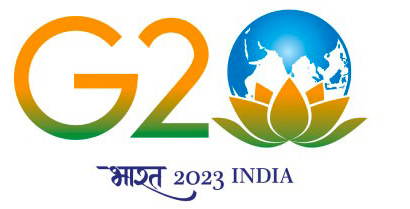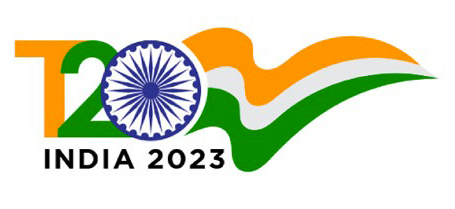The past decade has witnessed the emergence of multiple debates on digital sovereignty, a hotly debated topic, that does not have a universal definition yet. Traditional conceptions of sovereignty are intimately intertwined with the key features of the state, and the lack of a shared understanding of digital sovereignty has inspired multiple interpretations frequently stressing authoritarian or protectionist connotations of this contested notion.
This essay takes a different stance, putting forward the notion of “Good Digital Sovereignty” which is grounded in the idea that any entity (not only state) can be digitally sovereign when they are able to understand technology and use it for their own benefit. In this perspective, digital sovereignty is a function of one’s capacity to grasp the functioning of technology and being empowered by it.
People, states, or any other entity are digitally sovereign when they can fully enjoy the fundamental right to self-determination and “pursue their economic, social and cultural development” consecrated in Article 1 of the UN Charter, of the International Covenant on Civil and Political Rights and of the International Covenant on Economic, Social and Cultural Rights. Digital sovereigns can exercise agency and authority over the data, software, and hardware they produce or use. On the contrary, digital subjects lack such agency.
Despite not having an explicit digital sovereignty strategy, India and Brazil offer interesting examples of how good digital sovereignty already exists and can be built, adopting either a top down or a bottom-up approach. Based on the empirical work conducted by the CyberBRICS Project, hosted by the Center for Technology and Society at FGV Law School, Rio de Janeiro, the next sections will provide some instances of how the current and upcoming hosts of the G20 are building good digital sovereignty through public digital infrastructures and digital commons.
The Indian Unified Payments Interface
The Indian approach to digital sovereignty, while not explicitly labelled as such, has been built on the development of national public digital infrastructures, organised in the IndiaStack. This integrated approach, enshrined in the Digital India plan, is based on three fundamental pillars: The digital identity system Aadhaar, the electronic payment system called Unified Payments Interface (UPI), and the personal data consent management system called Data Empowerment and Protection Architecture (DEPA).
While each of these pillars is not exempt from criticism, it is important to acknowledge that they represent one of the most ambitious and successful digital transformation effort, aimed at providing digital identity, digital payments, and capacity to manage digital personal data to the Indian population of almost 1.5 billion individuals.
In this context, UPI has been established by the Reserve Bank of India and Indian Banks’ Association in accordance with the Payment and Settlement Systems Act, 2007, and is operated by the National Payments Corporation of India, a non-for-profit entity. UPI was introduced in 2016, as an instantaneous payment network based on an open API, conceived to be easily utilisable through any type of smartphone, thus democratising online payments while allowing all stakeholders to easily innovate based on the existing homegrown digital public infrastructure.
The UPI success has been staggering, having achieved almost nine billion transactions as of April 2023. Conspicuously, this success has also been possible thanks to the massive increase of internet connectivity over the past seven years, which may be seen as the positive impact of strong Network Neutrality rules, also adopted in 2016, that have promoted competition while also guaranteeing non-discriminatory mobile internet access to Indians.
The Brazilian Pix Payment System
In 2020, the Brazilian Central Bank (BCB) inaugurated an initiative very similar to UPI, the “Pix payment system,” familiarly known as “Pix.” Since its adoption, through BCB Regulation 1 of 12 August 2020, Pix has become the most utilised payment instrument in Brazil, being adopted by 70 percent of the Brazilian population.
It can be utilised to transfer money at no cost 24/7, thus facilitating economic transactions enormously, as the only requirements needed to use Pix are a smartphone, a bank account, and internet connectivity. It is also important to stress that, despite notable advancement, none of these latter elements are universally affordable in Brazil as in most Global South countries. In this respect, it is not a coincidence that 70 percent of Brazilians use Pix as this is also the percentage of the connected population that primarily uses mobile internet access via smartphones.
It is also important to emphasise that before Pix, the only available option to process instantaneous electronic payments on a 24/7 base in Brazil was to use the networks of foreign e-payment giants, Visa and Mastercard, that charge a 3 percent fee on each transaction, besides centralising data collection of all their users. These latter points are the main reasons why the development of public digital infrastructures like Pix are enormously relevant from a good digital sovereignty perspective.
The vital role of the two credit card behemoths before Pix meant that Brazilian digital payment sovereignty was de facto delegated to two foreign actors extracting hefty profits from the payments system, but also regulating the sector through their private orderings, powered by big data analytics.
Indeed, it is essential to emphasise that electronic payment intermediaries have not only an economic function but have also an essential data governance function. Their business model and strategies increasingly rely on (personal) data processing, which becomes as valuable as the fees they collect.
In this perspective, stimulating a domestic public digital payment infrastructure is instrumental to achieve three goals: Simplification and democratisation of payments, reduction of market and data concentration, and provision of unique insight onto the national economy to the Central Bank of Brazil (rather than to two foreign actors), thus reverting a trend that characterises the Global South, that many scholars have defined, as “data colonialism”.
Community Networks: Promoting Good Digital Sovereignty through Digital Commons
A final yet essential consideration is that good digital sovereignty is not only fostered by state activities but can also be developed by local communities in a bottom-up fashion. A telling example in this sense is offered by community networks, crowdsourced connectivity initiatives, that play an increasingly relevant role to expand internet access at both the Indian and Brazilian level.
Community networks are crowd-sourced, bottom-up initiatives, built and operated by local communities as digital commons to overcome digital divides and achieve “network self-determination,”[1] proving that internet connectivity can be built by the local communities for the local communities. These alternative and complementary strategies to connectivity expansion are the quintessence of self-determination, demonstrating that local communities can become protagonist of their digital futures by developing their own digital infrastructures, services, and content.
Brazilian quilomobola[2] women, rural communities, and slum-dwellers in both India and Brazil and in South Africa—which will host the G20 after its two IBSA partners—have become the protagonists of their digital futures by building their own community networks, learning how to literally create new parts of the internet catering to the needs of the local communities, based on the characteristics of the local communities.
In other words, even local communities of previously unconnected individuals can be digitally sovereign, understanding and developing technology, and mustering their economic, social, and cultural development.
Good Digital Sovereign is instrumental to foster self-determination
This conception of digital sovereignty leads us to consider that it would be rather paternalistic and ultimately incorrect to assume that only states can be at the origin of digital sovereignty, although they have a key role to play. On the contrary, depending on the initiative at stake, the “good digital sovereign” can be an individual, a local community, a corporation, a state, or even a supranational organisation.
In this spirit, the suggestion of this author is to adopt an agnostic approach to digital sovereignty, analysing the merits of the specific initiatives. Regardless of the nature of the digital sovereignty, the shared goal of good digital sovereignty must be fostering empowerment, progress, and inclusion through technology.
[1] I define Network Self-determination as the “right to freely associate in order to define, in a democratic fashion, the design, development and management of network infrastructure as a common good, so that all individuals can freely seek, impart and receive information and innovation.” The concept is based on the consideration that by freely developing connectivity infrastructure, individuals and communities quintessentially enjoy their fundamental right to self-determine, i.e., to “pursue their economic, social and cultural development” through connectivity.
[2] Quilombos are communities that emerged as refuges for African enslaved individuals who escaped exploitation during the period of slavery in Brazil, established by Portuguese colonisers in the 16th century and maintained until 1888. The inhabitants of these communities are called quilombolas. With the adoption of the 1988 Constitution, Brazil enshrined the quilombolas right to own and use the land they were on.




